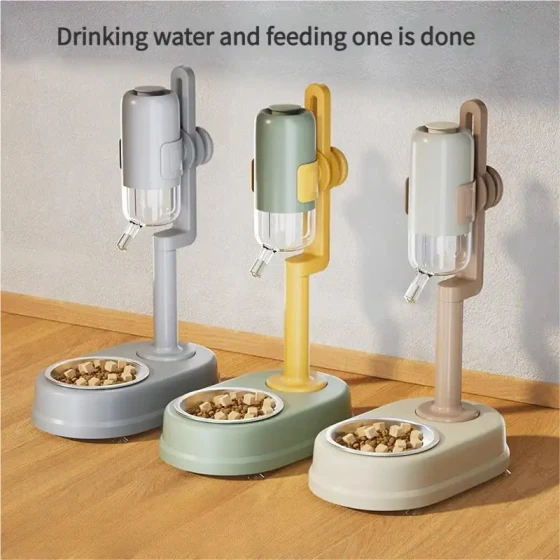What to Do If a Cat Is Choking_A Complete Emergency Guide for Cats Choking
What to do if a cat is choking? A complete emergency guide for cats choking
As a "cat slave," have you ever encountered your cat suddenly making a "ah-woo" sound, then starting to gag, cough, or even looking very distressed? Don't panic! This may be a cat choking. A cat's curiosity is like a bottomless pit; they want to taste and chew everything. From small things like threads and fur to larger objects like toy fragments and bones, all can be accidentally swallowed and get stuck in the throat. This is no joke — in severe cases, it can be life-threatening. Just like humans getting a fishbone stuck, it’s very uncomfortable, and for cats who can’t speak, the danger is even greater.

This article is like a "cat-owning family emergency manual," telling you how to quickly determine if your cat is choking and hands-on teaching you some life-saving first aid methods. Of course, the most important is how to prevent it, so your home's "gold-swallowing beast" stays away from danger!
What Are the "Signals" That a Cat Is Choking?
Cats won’t point to their throat like humans to say "I'm stuck!" They express discomfort through a series of behaviors. As pet owners, we need to learn to read these "Morse codes."
Common symptoms of a cat choking include:
- Gagging, nausea, severe coughing: This is the most common signal. The cat will open its mouth wide, make gagging-like sounds, or frequently cough, trying to expel something. Sometimes it sounds like they are vomiting hairballs, but if it lasts long without anything coming up, be alert.
- Drooling or increased saliva: Foreign objects irritating the mouth and throat cause excessive saliva secretion.
- Scratching the mouth with paws or rubbing face on the ground: They may try to paw at their mouth or rub their face on the floor, hoping to dislodge the stuck object.
- Difficulty breathing or abnormal breathing sounds: If the airway is blocked, the cat may breathe rapidly, wheeze, have heavy breathing sounds, or even make strange "purring" noises.
- Stress, irritability, or even panic: Inability to breathe properly causes extreme discomfort and fear.
- Neck extension: The cat may stretch its neck to try to breathe more easily.
- Blue or pale gums or tongue: This is a dangerous sign of oxygen deprivation, indicating an emergency and immediate first aid is needed.
- Loss of appetite or refusal to eat: Throat pain or discomfort causes the cat to resist eating.
- Weakness or fainting: Severe oxygen lack can cause the cat to collapse, lose balance, or even pass out.
Note that symptoms like coughing or vomiting may also be caused by other illnesses, such as hairball syndrome or respiratory infections. But if these symptoms suddenly appear after eating or playing, accompanied by obvious distress and struggling, foreign object choking is very likely.
Race Against Time! Emergency Treatment for a Choking Cat
If you are sure the cat is choking, don’t panic! Staying calm and acting quickly with first aid is very important.
1. Stay Calm and Assess the Situation
First, take a deep breath and calm yourself. Observe the cat’s symptoms and determine if the airway is completely blocked. If the cat can still cough or make sounds, the airway is not fully obstructed. Avoid aggressive first aid maneuvers at this time to prevent pushing the object deeper.
2. Check the Mouth and Try to Remove the Foreign Object
If the cat cooperates or if the situation is urgent, carefully check the cat’s mouth.
- Secure the cat: Cats in pain and panic may struggle and bite. For safety, try wrapping the cat snugly in a thick towel, leaving only the head exposed.
- Open the mouth: Gently pry open the cat’s mouth, using your thumb and forefinger to hold behind the canine teeth to help keep the mouth open.
- Inspect the throat: Pull out the tongue, shine a flashlight into the throat, and look for any foreign object.
- Remove carefully: If you clearly see the object and it looks easy to remove (such as smooth, non-hooked items), try to carefully grasp it with round-ended tweezers. Remember! Never pick with your fingers, especially if you can't see the object or if it’s sharp or string-like. This may push the object deeper or damage the throat. For string-like objects, don’t forcibly pull as it may injure or perforate the digestive tract.
3. Heimlich Maneuver (Abdominal Thrusts)
If you cannot remove the object via the mouth or if the cat shows severe symptoms like breathing difficulty or blue gums, perform the Heimlich maneuver immediately. This method uses abdominal thrusts to produce airflow from the lungs to expel the object.
- Pick up the cat: Hold the cat so its back rests against your chest, head up, limbs hanging naturally.
- Find the spot: Locate a soft depression below the ribs and above the stomach. For large cats, use your fist; for small cats or kittens, use fingertips.
- Perform thrusts: Make a fist with one hand, cover it with the other hand, place on the spot, and give 3 to 5 quick, upward and inward thrusts. Movements should be firm but controlled to avoid injury.
- Check and repeat: After several thrusts, check the cat’s mouth again. If the object hasn’t been removed, repeat until expelled or breathing improves.
- Inversion assistance (optional and risky): In emergencies where the cat is unconscious, you can try inverting it and gently patting the back to use gravity to help dislodge the object. This method carries risks and should be used cautiously and should not delay veterinary care.
Important Note: The Heimlich maneuver carries certain risks to the cat. Even if the object is removed successfully, immediately take the cat to a veterinary hospital for thorough examination to confirm no internal injuries.
4. Immediate Veterinary Care
No matter the situation, once foreign object ingestion is suspected, the safest move is to contact or go to the nearest veterinary hospital immediately. Veterinarians have professional equipment (such as endoscopes, X-rays) and experience to accurately locate and identify the object and carry out the proper treatment, including endoscopic removal or surgery if necessary. Remember, the sooner you get veterinary help, the higher the chance for successful treatment.
How to Prevent Cats from Swallowing Foreign Objects?
"Prevention is better than cure," especially true with cats swallowing foreign objects. Good prevention minimizes risks.
- Store small items: Tiny, shiny, or slender objects attract cats—threads, rubber bands, beads, coins, hair clips, buttons, plastic bags, earplugs, etc. Always keep these out of reach and make keeping them tidy a habit, as if you had small children at home.
- Choose safe cat toys: Buy toys made from safe materials that won’t easily break into small parts and get swallowed. Regularly check toys for damage and discard broken ones promptly. Avoid toys with small pieces, feathers, or thin strings unless you supervise playtime.
- Be careful with bones and fishbones in food: When feeding cats, ensure the food contains no small sharp bones or fishbones, which can easily get stuck or damage the digestive tract.
- Watch houseplants: Some plants are toxic to cats, and cats may chew leaves or stems causing discomfort or poisoning. Learn which plants are toxic and place them where cats cannot reach.
- Keep fur cleaned up: Cats swallow fur when grooming. While most hairballs pass naturally, excessive fur can cause digestive issues. Regular brushing reduces the amount ingested.
Common Questions and Answers
-
Does coughing mean the cat is choking?
Not necessarily. Causes for coughing include hairballs, respiratory infections, asthma, etc. If occasional coughing occurs with normal appetite and energy, it may be hairballs or other minor issues. However, frequent coughing with gagging or breathing difficulty warrants caution for choking. -
If a cat swallowed a foreign object but seems fine, does it need veterinary care?
Even if the cat appears fine, if you are certain or highly suspicious that the cat swallowed a foreign object—especially sharp, large, or string-like—take it to a veterinarian promptly. Some objects cause no immediate symptoms but may cause damage or blockage later. Veterinarians can use imaging tests (X-rays, ultrasound) to locate the object and advise accordingly. -
What if a cat swallows a string?
String-like objects are very dangerous. If your cat swallows string, even if one end is still outside the mouth, do NOT pull it forcibly! Strings can cause an "accordion effect" in intestines, leading to blockage or cutting injuries. Take the cat to the vet immediately for professional treatment. -
Can I induce vomiting to get the object out?
Inducing vomiting should only be done under veterinary guidance and is not recommended at home. Incorrect actions may cause the object to lodge in the esophagus or cause aspiration pneumonia. For sharp, corrosive, or large objects, vomiting may cause secondary injuries.
Conclusion
Cats are important members of our families, and their health and happiness are every owner’s greatest wish. Learning to recognize choking signs, mastering essential first aid, and staying calm during emergencies can buy precious rescue time for your cat. Of course, the best first aid is never to need it; through daily prevention and creating a safe living environment, you can keep your cat away from choking dangers. Remember, in your moments of panic, a professional veterinarian is always your strongest support.
References:
- Heimlich Maneuver in Cats: How to Perform Heimlich Maneuver If Cat Is Choking | PetMD
- What to Do if Your Cat is Choking - American Red Cross
- My cat or kitten is choking and gagging, what should I do about it? - Vets Now
- Signs Your Cat or Dog Is Choking & What To Do - Coastal Care Veterinary Emergency & Referral Hospital
- What to Do if Your Dog or Cat is Choking | Somerset County Emergency Vet - AnimERge
- Signs Your Cat is Choking & What to Do | Memphis Vets - Animal Emergency Center
- How to Handle Pet Foreign Object Ingestion? Symptoms and Key 72-Hour Window
- What to Do if Your Cat is Choking - Hill's Pet Nutrition
- [Cat Knowledge] What to Do If a Cat Vomits After Eating Foreign Objects? Vet’s Guide to Symptoms and Treatments - Reid Cat Litter
- How to Determine if a Cat’s Throat Has a Foreign Object - MungDog Network
- Must-Learn for Cat Owners! 2 Emergency Methods for Cat "Accidental Food Swallowing"… Super Important - ETtoday Health Cloud
- How to Determine if a Cat’s Throat Has a Foreign Object - Bull Pharmaceuticals
- What to Do If You Suspect Pets Have Swallowed Foreign Objects? - Sina
- Signs Your Pet Is Choking & What to Do | Plains Vets
- What to Do If Your Pet Is Choking? Heimlich Maneuver Every Owner Must Know! - Diary - Douban
- Several Cat SOS Signals, How to Judge Foreign Object Swallowing? - Weipet Pet Navigation
- How to Help a Gagging Cat & Prevent Hairballs - wikiHow
- How to Handle Pet Foreign Object Ingestion? Symptoms and Key 72-Hour Window
- What to Do When Cats and Dogs Swallow Foreign Objects?! How to Judge Choking Symptoms and Treatment - PawpawLand
- What To Do If Your Cat Makes Strange Noises Like Its Throat Is Blocked? - Himalaya Mobile
- Choking Cat - What to Do | First Aid for Pets - YouTube
- What to Do If Your Cat Swallows Foreign Objects... Induce Vomiting? See the Veterinary Guide - Douban
- How to Judge If Cats or Dogs Swallowed Foreign Objects? Choking Symptoms, Treatments & Dangerous Items - Wang Miao Planet
- Foreign Object Swallowing: First Aid - Miaoyou Medical International - Mayo Clinic
- When a Cat Chokes on Food, It Can Be Fatal! Learn Emergency Methods in One Minute - Sina



-560x560.webp)